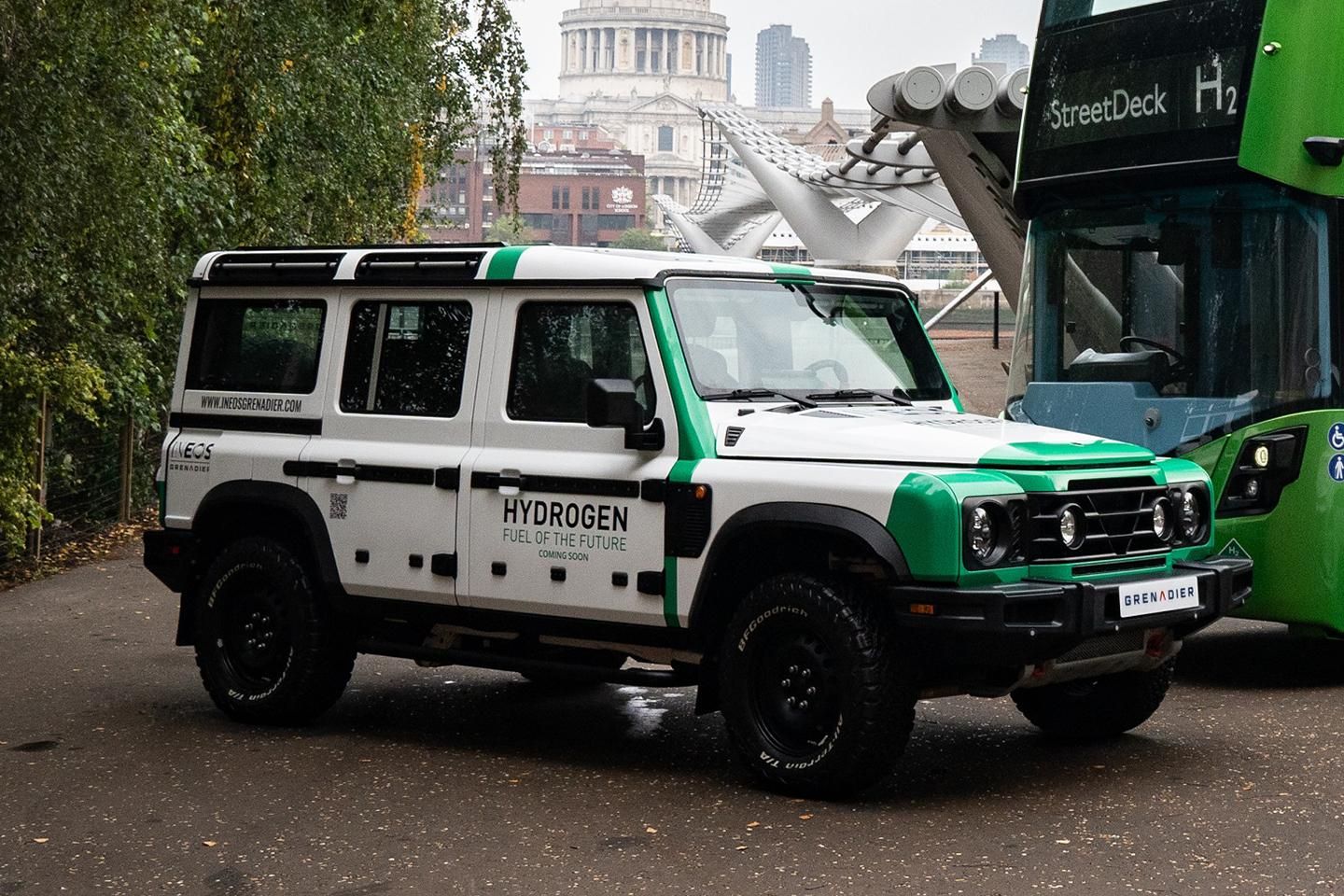I think the difference is that the Grenadier is a very close copy of the Defender (even according to Ineos) and the Defender image is
@Martinjmpr put it so well a "trade dress" and very unique and embodies a large chunk of the JLR lineage & global image....whereas pickups and SUV's are a generalized group that is not protected. Nobody is saying they can't make an SUV, but to do it with strict likeness to the older Defender is what JLR is pushing back on. I see both sides, it's not cut and dry IMO, which is probably why it's going to court AND why it already went to court in the UK...but they have different laws and rules.
It doesn't need to be exact to have "likeness" you see it all the time with badging and branding, it can be similar enough to warrant the legal discussion....making an exact copy and adding 1" to all the doors doesn't mean it's not a copy in spirit.
Based on the lawsuit it comes down to JLR "abandoning" the marque Defender image in the US....is there a statute of limitation?
I can see where you're coming from for sure Nick. It certainly is pretty similar to the Defender. The old Defender is at the root of the narrative behind how the Gren came to be, too, which further supports the "copy" argument. If Ineos had never mentioned the Defender or if Ratcliffe had never shown interest in it-- if they were just a brand new car company -- the "it's a copy" argument might be a bit weaker but not by much. I personally see it a bit like "Every Breath You Take by P-Diddy is to Sting what the Gren is to the Defender", but there are others who think "sampling" is the same as "ripping off", so I understand that perspective on the Gren too. But I guess that's the question for me -- where is the line between "copy" and "something new"? (and I get we won't answer that question, and that's exactly what the lawsuits are for). But actually,
@Martinjmpr's post really resonates and answers this a bit:
Without wanting to get too much into the weeds here, in order for JLR to prevail they have to show two things: First, that the Grenadier infringes on a trademark or "trade dress", and second that they, JLR, could be harmed by that.
.....
They know they can't prevail and they don't care. Their objective is to try and bankrupt Ineos with legal fees by filing frivolous lawsuits in as many jurisdictions as possible, just to prevent the introduction of a vehicle that they, JLR, don't even want to sell anymore which I think is just plain ********y.
I didn't quote the whole message for brevity, but I was thinking of something similar to what you shared, Martin. There's a deeper thing at play here in my mind that I think speaks to the difference in philosophy between Ineos and modern Land Rover's corporate direction and why this lawsuit rubs me the wrong way. I've been thinking about this a lot and I have an instinct/theory/observation.
It strikes me that the Grenadier (And the Defender before it) was first and foremost a
tool, like a hammer as you've described. And there are only so many ways to design a tool to do a given job. In the case of a hammer, it's something hard and heavy on the end of a stick, because for a whole host of reasons -- experience, physics, the human hand, etc. -- that is the shape that works best for driving nails, and it would be a bit silly for Craftsman to win a lawsuit against Stanley because of a similar design of hammer (I think they might be the same company now anyway!).
Similarly, the Gren is the shape that it is because for a whole host of reasons -- approach angles, interior space, exterior usability -- that's the shape that works to do the job (the job in this case is travel well in remote areas off road). Put another way, a 4x4 vehicle for off-road travel that maximizes interior space, load hauling, and off-road performance, is going to look roughly like the Gren. Or the Old Defender. Or the G-Wagen in the front with the hood. Or the 70 Series in the back with the tailgate. Or the Jeep underneath with the 4x4 system. That's the nature of designing tools - the function wins over the form, and given the common functions of these vehicles, it's not surprising the forms are similar.
JLR on the other hand don't seem to be seeing their vehicles as tools anymore -- they are seeing them as "Icons", as symbols of status, akin to statues of religious figures worthy of protection and preservation as if there is something mystical and unique and special about the vehicles itself. In my opinion, that's at the root of why this lawsuit feels icky -- I think what JLR fails to recognize is that the reason their tool is iconic is because of the
jobs it was asked to do and seen doing, not because of what it is. In other words, the OG Land Rovers weren't special -- they were just cars (and pretty mediocre ones, in many ways) -- but the people who used them were special. These are people who are willing to go see what's at the end of that road, or if it's possible to drive from London to the Singapore, or who were willing to brave miles of mud and ruts and danger because some kids need a mosquito net and nobody else will bring them one -- it is these people doing these jobs that is iconic.
Nowadays Land Rover has said there's no market for these legends. Again, by "Legends" I'm not referring to the cars, but the people. Land Rover has said those people don't matter enough to build a vehicle for, which is fine and 100% their choice as a private company. These are people vaccinating innocent kids against Polio, or cleaning up Land Mines in war torn countries, or simply going beyond their particular spot in their particular shire to have a grand adventure that will inspire future generations - and Land Rover has said "They don't matter enough to build a vehicle for". I disagree. I think they do matter - in fact I think in many ways they represent the best of us.
All of this legal stuff between JLR and Ineos leaves a sour taste in my mouth because Land Rover is attempting (hopefully unsuccessfully) to litigate out of existence a tool that will be extensively used by the people whose needs they have chosen not to meet. These are the same kinds of people that JLR owes most of their 'Adventure-ready' reputation to. It doesn't just feel like a lawsuit - it feels like a betrayal of those who made Land Rover into the cultural icon it is today.




